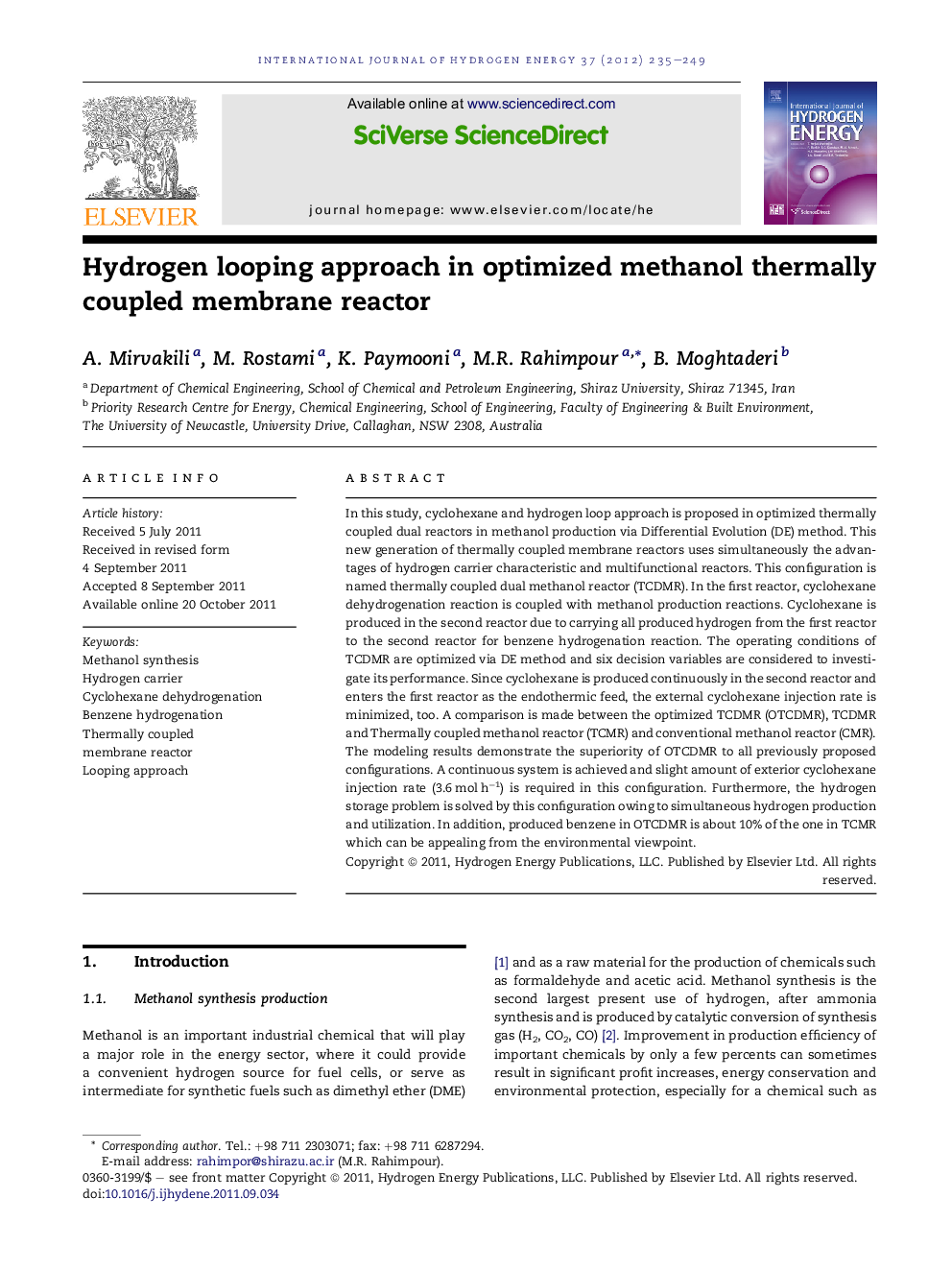| Article ID | Journal | Published Year | Pages | File Type |
|---|---|---|---|---|
| 1277139 | International Journal of Hydrogen Energy | 2012 | 15 Pages |
In this study, cyclohexane and hydrogen loop approach is proposed in optimized thermally coupled dual reactors in methanol production via Differential Evolution (DE) method. This new generation of thermally coupled membrane reactors uses simultaneously the advantages of hydrogen carrier characteristic and multifunctional reactors. This configuration is named thermally coupled dual methanol reactor (TCDMR). In the first reactor, cyclohexane dehydrogenation reaction is coupled with methanol production reactions. Cyclohexane is produced in the second reactor due to carrying all produced hydrogen from the first reactor to the second reactor for benzene hydrogenation reaction. The operating conditions of TCDMR are optimized via DE method and six decision variables are considered to investigate its performance. Since cyclohexane is produced continuously in the second reactor and enters the first reactor as the endothermic feed, the external cyclohexane injection rate is minimized, too. A comparison is made between the optimized TCDMR (OTCDMR), TCDMR and Thermally coupled methanol reactor (TCMR) and conventional methanol reactor (CMR). The modeling results demonstrate the superiority of OTCDMR to all previously proposed configurations. A continuous system is achieved and slight amount of exterior cyclohexane injection rate (3.6 mol h−1) is required in this configuration. Furthermore, the hydrogen storage problem is solved by this configuration owing to simultaneous hydrogen production and utilization. In addition, produced benzene in OTCDMR is about 10% of the one in TCMR which can be appealing from the environmental viewpoint.
Graphical abstractSchematic diagram of OTCDMR.Figure optionsDownload full-size imageDownload as PowerPoint slideHighlights► Cyclohexane and hydrogen loop approach is proposed in optimized thermally coupled dual reactors in methanol production. ► The 90% decrease in cyclohexane consumption rate in OTCDMR compared with TCMR which is appealing from the economical viewpoint. ► Produced benzene in OTCDMR is about 0.1 times of the one in TCMR which can be appealing from the environmental viewpoint. ► The 16% decreases in the carbon dioxide mole fraction in OTCDMR compared with CMR. ► The operating conditions of a thermally coupled membrane reactor are optimized via DE method.
